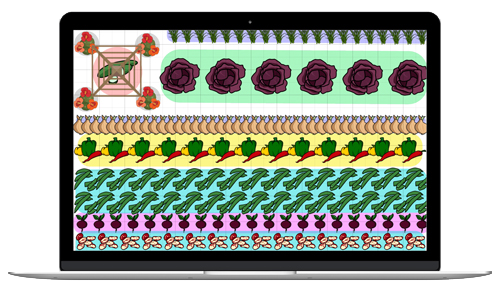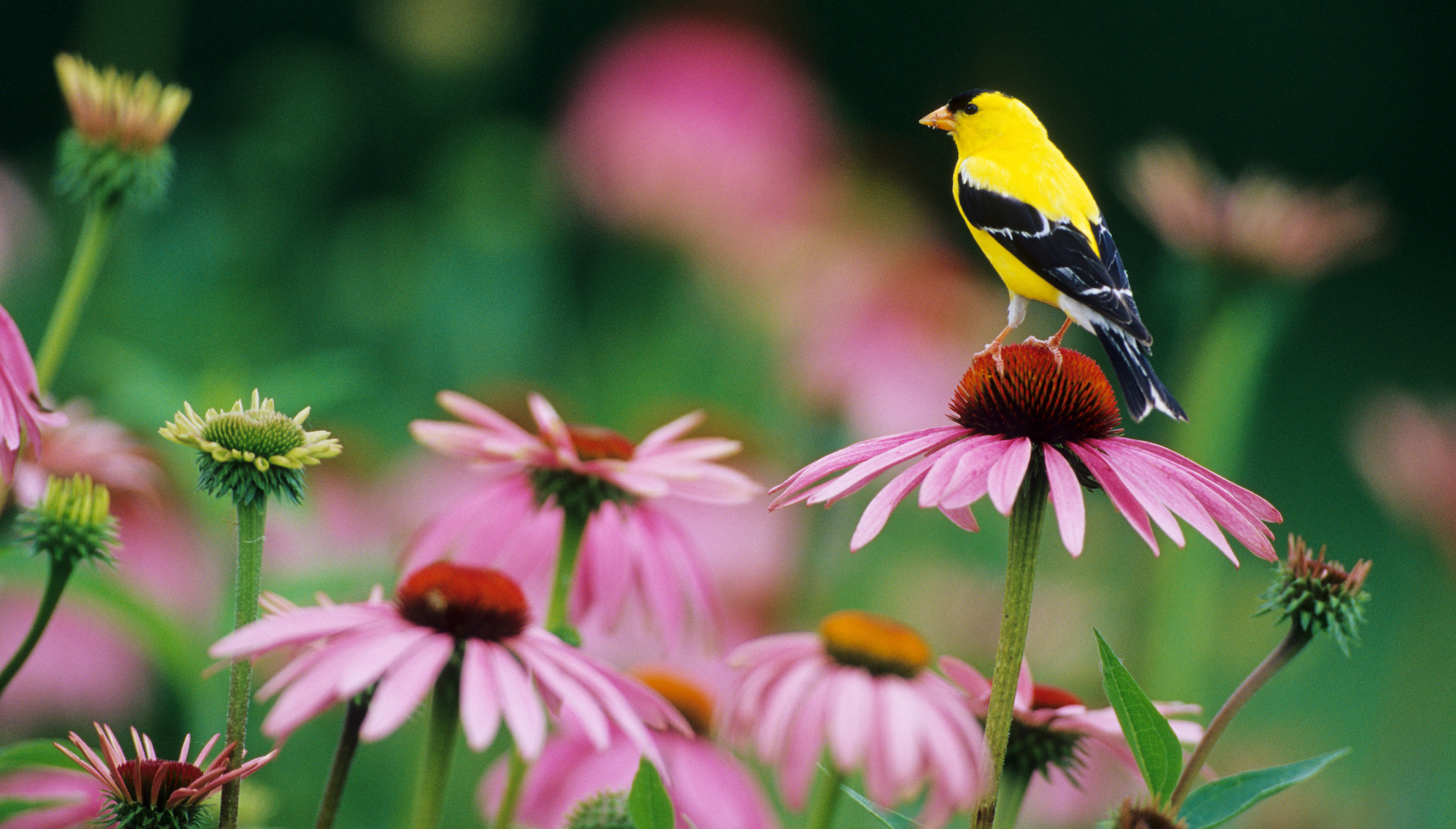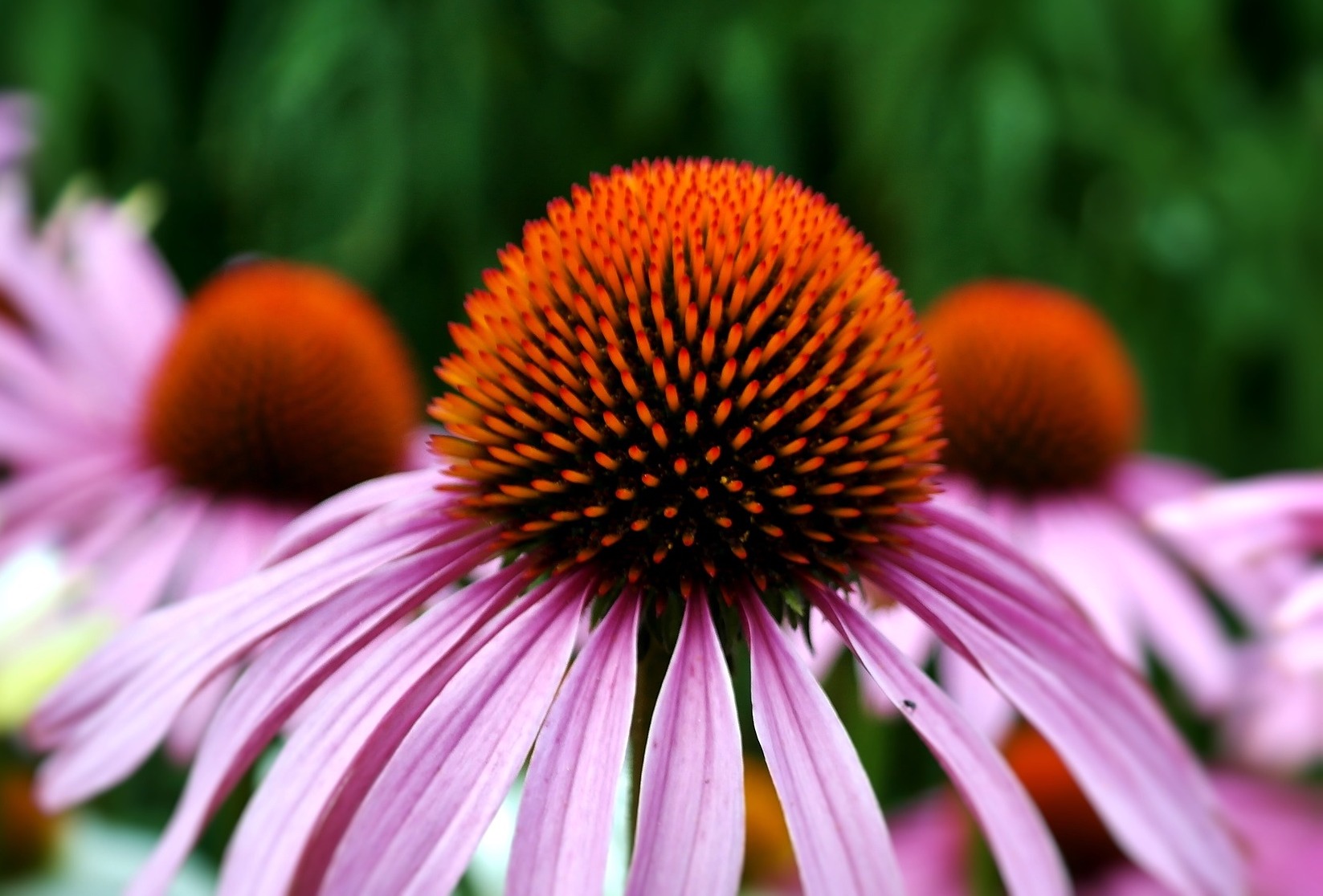
Planting, Growing, and Caring for Coneflowers
The Almanac Garden Planner - Use It Free for 7 Days!
Plan your 2025 garden with our award-winning Garden Planner.
Types
These are native, unless noted …
- ‘Robert Bloom’ (Echinacea purpurea): red-purple petals; prominent, dark orange centers
- ‘Finale White’ (E. purpurea): creamy-white petals; greenish-brown centers
- Narrow-leaf coneflower (E. augustifolia): similar to E. purpurea
- Pale purple coneflower (E. pallida); native to Ontario
- Sanguine purple coneflower (E. sanguinea): red-purple petals with streaks (sanguinea, Latin for “blood” refers to streaks in petals; native to southern states
- Smooth purple coneflower (E. laevigata): narrow, drooping, pale-pink petals; endangered
- Tennessee coneflower (E. tennesseensis): upturned mauve petals; greenish-pink centers
- Topeka purple coneflower (E. atrorubens): deep pink short petals; rare
- Wavy leaf coneflower (E. simulata): yellow pollen distinguishes it from E. pallida (white pollen)
- Yellow coneflower (E. paradoxa), aka Ozark coneflower: yellow petals
- ‘Cleopatra’ (E. hybrid): soft yellow petals; copper-green centers
Read about our favorite coneflower varieties here!

ADVERTISEMENT
Try and keep the bigger leaves green. If they are yellowing or turning brown cut them off. In order to coax blooms fertilize and leave in the sun for at least 5 hours a day.
My cone flowers have green stalks growing up out of the middle of the bloom. The bloom still has purple pedals, with six or so green stems growing out of the middle of the seed cone, with more blooms. They look very strange.
Well, what ever is the cause, it’s not good. The plant is either infested or infected by leafhoppers and/or eriophid mites. The leafhoppers carry a disease in their saliva that causes the plant to fail in a variety of ways. The mite feeds on coneflower. These bugs lay eggs in the grass and hatch to tunnel up the stems of the flowers. You need to discard the plants and keep the lawn trimmed.
I live in North Texas. I planted some coneflowers I got at a nursery. During the day, they look wilted but the next morning, they have perked up. I thought they liked heat and sun. Is it because this is their first summer in the ground?
This is all a natural response to the heat and sunlight. Continue watering as usual, but not to excess in reaction to the wilting.
I live in nebraska i have coneflowers in my yard they grow everywhere! Dry soil, wet soil, in the sun in the shade! They grow like weeds and tend to crowd out everything around them!! The only thing controlling them are the rabbits that chew some of them to the ground in the spring!
I am 80 years of age and I have had many years of interest in the flowers. I did a water colour painting of an American “Lady tending coneflowers” copying from a photo sent to me by a lady in SAN ANTONIO. I still have the painting but no connection with anyone in America but it still hangs in our lounge. John Grice
Hi John,
I read your comment regarding your painting of a Lady tending cone flowers. I would be interested in seeing a photo of your painting. I love paintings that combine flowers and water. You said that you have no connection with anyone in the states. Where do you live? I'm from Michigan.
Rose
I've read that coneflowers should be divided occasionally. I've grown them for many years. All of mine grow from a rosette of leaves . . . they don't look like anything that would tolerate division. Can you elaborate on the process of dividing them?
I needed to move some coneflowers this spring. My soil is clay so I dug them up in pieces. I was not gentle. I planted them in a new bed. Aside from them needing some extra water until they established ( about 3 weeks) they have ALL flourished. Six weeks later they are all growing and flowering. I originally had two plants and now I have six. I would say you could divide them easily with just a shovel and plant them again. It’s a free way to get more plants.













